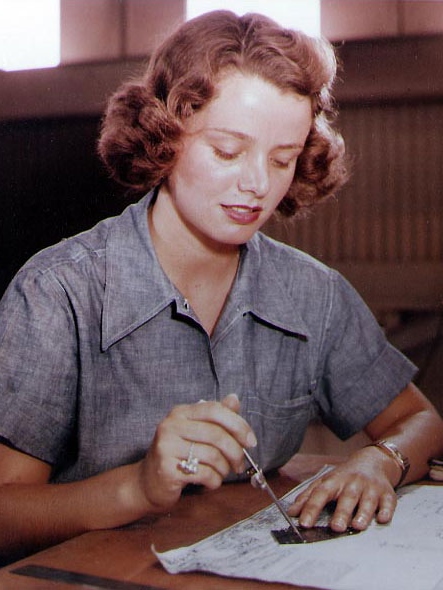HOLBROOK-ELIZABETH
ELIZABETH HOLBROOK

AM2

WAVES ON THE JOB IN WORLD WAR II
The WAVES (Women Accepted for Volunteer Emergency Service) program was created on July 30, 1942 as a division of the U.S. Naval Reserve in response to the need for additional military personnel during World War II. From its beginning the WAVES were an official part of the Navy and its members held the same rank and ratings as male naval personnel. They also received the same pay and were subject to military discipline. WAVES could not serve aboard combat ships or aircraft and initially were restricted to duty in the continental United States. Within their first year the WAVES were 27,000 strong. Late in World War II, WAVES were authorized to serve in certain overseas U.S. possessions and a number were sent to Hawaii. By the end of World War II there were well over 8,000 female officers and some ten times that many enlisted WAVES. In some places WAVES constituted a majority of the uniformed naval personnel and many remained in uniform to help get the Navy into and through the post-war era after World War II.
Although a large percentage of the WAVES did clerical work, others took positions in other diverse fields. In some respects the American society was not ready for women in military roles and they thus faced a difficult mission as they had to raise a force immediately and voluntarily from a group that had no military traditions, but also had to overcome hostility from their male comrades. Although the Navy high command strongly endorsed their work WAVES were often treated as war orphans whom no one loved.
To counter adverse public attitudes and encourage recruitment the Navy published numerous publicity photographs during World War II of WAVES in various assignments. One of these Navy photographs was of AM2 Elizabeth Holbrook which is in the collection of the National Archives and carries the following description:
”WAVES Aviation Metalsmith 2nd Class Elizabeth Holbrook checking a finished metal bracket against its blueprint in a repair building at a Naval Air Station in the Hawaiian Islands; circa mid-1945.”
Submitted by CDR Roy A. Mosteller, USNR (Ret)

